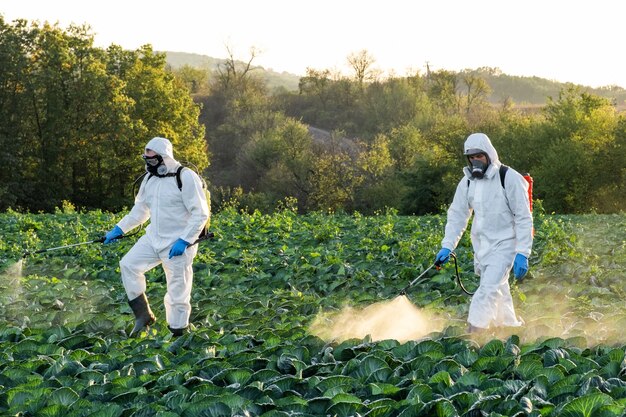Effective pest and disease management is crucial for maintaining healthy crops and ensuring high yields. In South Africa, where farmers face a diverse range of pests and diseases due to varying climates and agricultural conditions, proper management strategies are key to minimizing losses. However, many farmers make common mistakes that can lead to inefficiencies, increased costs, and reduced crop quality. This article outlines the 10 most common mistakes in managing pests and diseases in crops and offers practical solutions to help South African farmers improve their pest and disease management practices.
1. Delaying Pest and Disease Detection
One of the most critical mistakes farmers make is failing to detect pests and diseases early. Pests and diseases often spread rapidly, and the longer they are left unchecked, the more difficult and expensive it becomes to control them. Early detection is essential for effective management and preventing widespread crop damage.
Solution: Regularly inspect crops for signs of pests and diseases, especially during the growing season. Look for abnormal leaf discoloration, spots, wilting, or visible pests. Implement a scouting routine, either weekly or biweekly, and train staff to recognize early signs of infestations. Early identification allows for timely intervention.
2. Relying Too Much on Pesticides
Many farmers over-rely on chemical pesticides as the primary method of pest control. While pesticides can be effective, excessive or improper use can harm the environment, lead to pesticide resistance in pests, and pose health risks to workers and consumers.
Solution: Adopt an Integrated Pest Management (IPM) approach, which combines biological, cultural, mechanical, and chemical control methods. This balanced approach reduces reliance on chemicals and incorporates natural pest control methods, such as encouraging beneficial insects (like ladybugs and predatory wasps) and using organic pesticides where appropriate.
3. Incorrect Pesticide Application
Improper pesticide application, such as using the wrong pesticide for a specific pest, incorrect dosage, or poor application technique, can lead to inadequate pest control and environmental harm. It can also contribute to the development of pesticide resistance.
Solution: Always read and follow the manufacturer’s instructions for pesticide use. Ensure that the correct pesticide is chosen based on the pest species and crop type. Calibrate your spraying equipment to ensure even coverage, and apply pesticides during the appropriate time of day, typically in the early morning or late afternoon when temperatures are lower to reduce evaporation.
4. Neglecting Crop Rotation
Crop rotation is one of the oldest and most effective practices for managing pests and diseases. Growing the same crop in the same soil year after year increases the likelihood of pests and diseases targeting that crop. Some pests and pathogens thrive in the soil, where they can overwinter and re-emerge in the next planting season.
Solution: Implement a crop rotation plan, alternating between different crops each season. This practice helps break the life cycles of pests and diseases specific to certain crops and promotes soil health by reducing nutrient depletion. Rotating with legumes, for example, can help fix nitrogen in the soil and reduce the need for synthetic fertilizers.
5. Ignoring Soil Health
Healthy soil is essential for strong, disease-resistant crops. Poor soil health can lead to weakened plants that are more susceptible to pests and diseases. Many farmers focus only on treating visible symptoms rather than addressing the underlying issue of soil health.
Solution: Regularly test your soil to monitor its nutrient content, pH levels, and microbial activity. Use organic amendments such as compost and cover crops to improve soil structure, increase microbial diversity, and enhance plant health. Healthy soil supports strong crops that are better able to withstand pest and disease pressures.
6. Not Managing Weeds Effectively
Weeds can act as hosts for pests and diseases. By providing a habitat for harmful insects and pathogens, weeds can contribute to the spread of crop infestations. Additionally, weeds can compete with crops for nutrients, water, and sunlight, weakening plants and making them more susceptible to pests.
Solution: Implement an effective weed management strategy that includes cultural, mechanical, and chemical methods. This might include mulching, hand weeding, or using selective herbicides. Keep weeds under control to prevent them from becoming reservoirs for pests and diseases that can affect crops.
7. Using Inadequate Pest and Disease Monitoring Tools
Farmers who rely solely on visual inspections or manual methods of monitoring may miss subtle pest and disease issues that could escalate quickly. Without accurate monitoring tools, it’s difficult to determine the severity of an infestation and select the right control measures.
Solution: Invest in pest and disease monitoring tools, such as pheromone traps, soil sensors, and crop health monitoring systems. Technology can help track pest populations, monitor environmental conditions, and provide real-time data, making it easier to decide on the most effective intervention measures.
8. Not Considering Weather Conditions
Weather plays a significant role in pest and disease management. For instance, wet and humid conditions promote the spread of fungal diseases, while dry conditions may exacerbate pest issues such as aphids. Many farmers overlook weather patterns when planning their pest control strategies.
Solution: Stay informed about local weather forecasts and patterns. Weather apps and tools that track humidity, temperature, and rainfall can help predict when pest and disease risks are highest. Plan your pesticide or disease management applications according to the forecast, ensuring that your crops are protected during periods of high risk.
9. Inconsistent Monitoring and Follow-Up
Pests and diseases are dynamic, and their populations can fluctuate rapidly. Farmers who apply treatments without consistent monitoring or follow-up may find that their efforts are ineffective, as new pests or diseases can emerge in untreated areas.
Solution: Establish a consistent monitoring schedule throughout the growing season. Follow up after treatment to assess the effectiveness of your control methods. If necessary, apply additional treatments or adjust your approach to prevent re-infestation.
10. Failure to Clean and Maintain Equipment
Pests and diseases can spread through contaminated farming equipment, such as sprayers, tools, or harvesters. Failure to clean equipment properly after use can lead to cross-contamination and the spread of pathogens between fields.
Solution: Make it a practice to clean all equipment thoroughly after each use. This includes washing down sprayers, machinery, and tools to remove any pests, pathogens, or plant material that may carry disease. Proper sanitation helps limit the spread of infestations between fields, reducing the risk of crop damage.
Effective pest and disease management is essential for South African farmers to ensure healthy crops, high yields, and long-term sustainability. By avoiding these 10 common mistakes—ranging from delayed detection and over-reliance on pesticides to neglecting crop rotation and ignoring soil health—farmers can improve their management strategies and reduce crop losses. By implementing best practices such as Integrated Pest Management (IPM), investing in monitoring tools, and staying proactive throughout the growing season, farmers can better protect their crops, reduce environmental impact, and enhance profitability.
Join 'Farmers Mag' WhatsApp Channel
Get the latest Farming news and tips delivered straight to your WhatsApp
CLICK HERE TO JOIN






